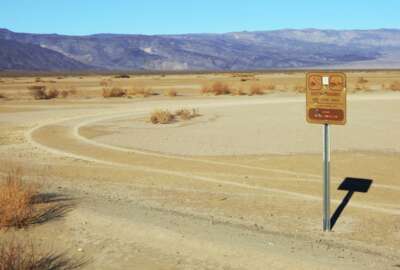After nearly 30 years covering the federal government in one way or another, I find myself looking at everything through an admittedly odd lens.
Last week, a vacation took me and my wife to the Grand Canyon, specifically the Grand Canyon National Park. Let’s see, between the flight out and checking in at one of the lodges in the “village” on the South Rim, I counted encounters with four federal agencies. Those would be, of course, Transportation Security Administration, FAA, Federal Highway Administration (on those fabulous Arizona highways), and the National Park Service. Did I miss any?
I’ve interviewed National Park Service directors and other officials over the years. But to tell you the truth, only this visit to a Big Ten scale park gave me sense of the scope of the agency’s mission.
At the Bright Angel Lodge, where you check in for that location and the plainer motels flanking it, I wondered, how well does the National Park Service oversee its concessionaires, in this case a company called Xanterra? I’d give them an A for staff friendliness, B for food, and C for housekeeping. Turns out a GAO report in 2017 commented on NPS oversight of concessionaires.
My wife asked, “Will you work the federal mules into a column?” Here goes. I’m not certain who has title to the hundreds of mules, but Xanterra operates them in the Grand Canyon. The mules work hard but appear well kept. People ride them down and up, if they’re not too short or too heavy (the people, that is.) We used mules to take our duffel bags down to the bottom and our own two feet to get ourselves there.
I recall being surprised once, when interviewing a GAO auditor, that the Interior Department even had mules among its many assets. Now here I was renting space on one. Cool!
For all its staffing problems and insufficient capitalization, the NPS does a creditable job of maintaining this vast park and its scary trails. I’d never seen the Grand Canyon. First sight takes your breath away. From the South Rim village all the way to the Phantom Ranch deep, deep down near the Colorado River, I scarcely saw a piece of litter. The mules poop along the trails, but it’s easy to step around the fragrant road apples.
At a mule pen at the trail head, a driver was training a skittish animal to get used to people. Complete with “Hoss Cartwright” style 10-gallon hat, long coat, leather chaps, and handlebar mustache, he made me wonder if it was an act. But no, he sauntered the mule over where it stood calmly, seeming to enjoy us patting its neck and scratching its ears.
Federal park rangers may or may not patrol the park, it’s hard to tell. Mainly their influence is indirect. In four days at the Canyon, including hiking all the way down and all the way back up, I don’t think we encountered a single ranger. The low, wooden ranger station near the Phantom Ranch was closed. We did see several uniformed volunteers along the trails. Also the many hired guides help keep an eye on things. They all know one another. I came up behind a couple, she carrying two backpacks, her unburdened husband having collapsed beside the trail. This was like three or four hours from the rim. Their guide conferred with an off-duty guide who was hiking with our group. I don’t know exactly what happened but soon a helicopter appeared overhead, coming to fish the collapsed guy out of the Canyon.
The Grand Canyon might be a natural wonder, or a supernatural one if you think that way, but its trails and pit toilets are the works of man. The National Park Service does a pretty good job taking care of this vast asset. I liked the fact that, while there are warning signs and a stout wall along the rim, inside the Canyon officials have placed few railings or other safety detritus. Only a few people a year fall to their deaths, and that takes some doing.
You do see hints of infrastructure in the Canyon. A water pipe runs from the higher North Rim, down and across and back up to the South Rim. Here and there the pipe appears underfoot. There’s a pump station you pass on one of the trails. The apparatus feeds the Phantom Ranch and the hotels upstairs. Like the famed IRS computer systems, the pipeline dates to the 1960s. It’s long overdue for replacement. It breaks frequently. If it ever failed, it would close down an attraction that draws five million visitors a year. Not just tough hikers like me, but busloads of people who don’t or can’t go to the bottom, simply content to spend a couple of nights and peer across from the miles of trail along the rim.
The pipe is a high priority among the National Park Service’s many capital needs. Yet the agency can’t seem to get the funding to build a new pipeline.
Congress is talking about a two trillion dollar infrastructure bill. Replace that pipe.
Copyright
© 2024 Federal News Network. All rights reserved. This website is not intended for users located within the European Economic Area.
